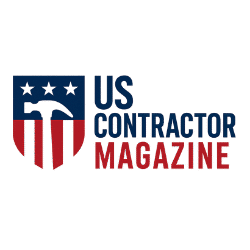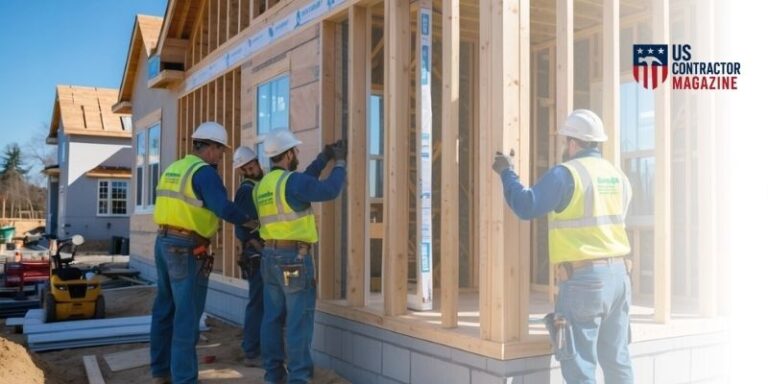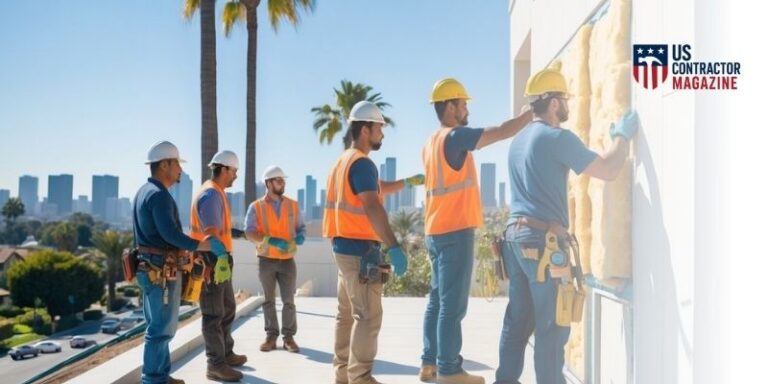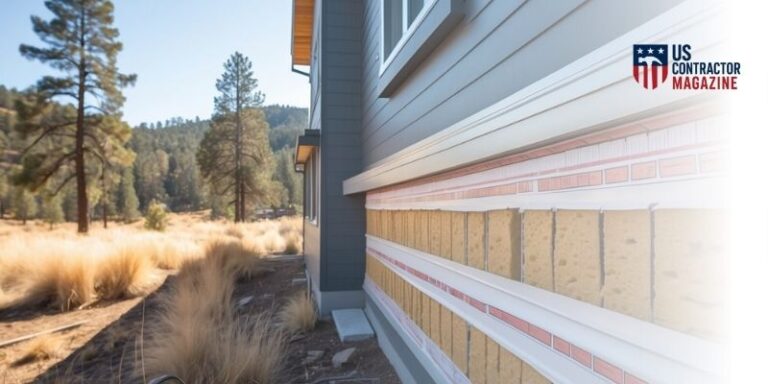
Barrier wall insulation plays a crucial role in improving fire resistance for homes in wildfire-prone areas. It adds an extra layer of protection that helps slow down or block the spread of flames and radiant heat. This makes buildings safer by reducing the chance of fire damage to walls and roofs.
Materials like noncombustible insulation and fire-resistant cladding work together to create a strong barrier. Using these materials in wall assemblies can prevent embers from entering wall cavities and reduce fire spread, enhancing the building’s overall resilience. Proper insulation also contributes to other benefits, such as sound reduction, making it a smart choice beyond just fire safety.
As wildfires become more common, understanding how barrier wall insulation fits into fire-resistant building strategies is essential. It offers a practical solution for homeowners and builders who want to increase safety without sacrificing comfort or efficiency.
How Barrier Wall Insulation Improves Fire Resistance in Wildfire-Prone Areas
Barrier wall insulation plays a key role in improving fire resistance by using materials that slow flame spread and withstand high heat. It also helps preserve the structure’s strength during wildfire exposure and reduces how fast fire moves through a building. These factors are crucial in wildfire-prone regions facing increased risks due to climate change.
Key Fire-Resistant Properties of Barrier Wall Insulation
Barrier wall insulation is often made from non-combustible materials, such as mineral wool or stone wool. These materials do not ignite easily and can resist high temperatures for long periods. Their dense structure helps reduce heat transfer, slowing the ignition of internal building components.
The insulation also has a low flame spread rating, which means fire is less likely to move quickly over walls. This property is essential in wildland-urban interface areas, where homes are near forests and wildfires are common.
In addition, fire-resistant insulation often has certifications or ratings from building codes. These ratings ensure the material performs under wildfire conditions to meet safety and construction standards.
Impact on Structural Integrity and Durability
Barrier wall insulation contributes to maintaining the building’s structural integrity during a wildfire. By slowing heat penetration, it protects framing and supporting elements from weakening or failing.
The insulation resists damage from flames and radiant heat, limiting warping, cracking, or collapse. This durability is vital for homes in wildfire-prone areas that need to remain standing long enough for evacuation or firefighting efforts.
When combined with fire-resistant cladding and framing, the wall assembly forms a stronger, more fire-resilient system. This integrated approach improves the overall lifespan and safety of the building under harsh fire exposure.
Role in Limiting Fire Spread and Protecting Buildings
Barrier wall insulation acts as an effective fire barrier inside the wall assembly. It slows or stops flames from spreading between rooms or adjacent structures. This containment helps reduce fire damage and increases occupant safety.
By reducing flame spread and heat transfer, it also lowers the risk of embers igniting other materials nearby. This is important in wildfire events, where flying embers can start new fires.
Using fire-resistant insulation as part of a complete fire-resistant construction system improves community resilience. It helps protect homes, reduces insurance risks, and complies with wildfire safety regulations in vulnerable areas.
Enhanced Solutions and Implementation for Fire-Resistant Construction

Fire-resistant construction in wildfire-prone areas requires careful selection of materials, compliance with strict safety standards, and practical retrofit approaches. These elements work together to reduce fire risks and improve a building’s resilience during fire seasons in the wildland-urban interface (WUI).
Types of Fire-Resistant Materials Used in Barrier Wall Systems
Common materials in fire-resistant wall systems include mineral wool, fiberglass, and phenolic foam insulation. These materials have self-extinguishing properties and high thermal resistance, which slow the spread of flames and heat.
Exterior cladding like fiber cement, stucco, brick, stone, and concrete also adds protection. These materials resist ignition and heat damage. Fire-resistant glazing, such as tempered or fire-resistant glass, is used in windows to maintain integrity during fires.
Fire-resistant coatings and roofing systems, including metal and Class B rated fire-resistant roofing, provide added barriers. Together, these materials shield the structure and help maintain air quality by minimizing smoke intrusion.
Meeting Fire Safety Standards and Building Codes
Meeting fire safety standards is critical. ASTM E119 is a widely used test that rates the fire resistance of wall assemblies, roofs, and floors. Fire walls typically require 2 to 4-hour fire ratings depending on the occupancy and risk level.
Building codes in North America often reference FEMA guidelines and include specific rules for WUI zones. These codes require fire partitions that prevent fire spread and structures that maintain integrity under high heat.
Proper installation and inspection ensure compliance. Fire-resistant glazing and roofing systems must meet these standards to be effective during wildfires. Meeting codes not only enhances safety but may also improve insurance eligibility.
Retrofit Strategies and Design Considerations for At-Risk Buildings
Retrofit strategies focus on upgrading existing buildings in wildfire-prone areas. This can include adding fire-resistant insulation or replacing combustible siding with fiber cement or stucco. Retrofitting may also involve installing fire-resistant glazing and improving roofing to metal or other fire-rated materials.
Design considerations include maintaining defensible space around the building with fire-resistant landscaping. This reduces fuel for flames and improves overall safety.
Effective retrofits improve energy efficiency and indoor air quality by sealing gaps and adding insulation. Retrofitting must follow fire safety standards and consider local fire seasons and wildfire patterns to protect occupants and property effectively.
- Barrier Wall Insulation
- 9725 Owensmouth Ave, Chatsworth, CA 91311, United States
- +18188730701
- https://barrierwallinsulation.com/
Frequently Asked Questions
Fire barrier wall solutions rely on specific insulation materials and construction methods to slow or stop fire spread. Performance depends on fire ratings, material properties, and how assemblies are built and maintained.
What types of insulation materials are considered the best for fire-resistant wall assemblies?
Mineral wool, like ROCKWOOL, is highly fire resistant. It withstands high heat and does not easily catch fire.
Fiberglass also resists fire but breaks down above 500°F and can ignite at higher temperatures. Fire-resistant foam and cementitious boards are used in certain assemblies for added protection.
How does a fire barrier wall differ from a fire wall in terms of construction and fire resistance?
Fire walls are designed to prevent fire from moving between sections of a building and often extend fully from floor to roof.
Fire barrier walls typically stop fire spread for shorter times and may have openings, while fire walls are more robust with ratings often 2 hours or more and no openings.
Can insulation in exterior walls significantly improve a building’s fire resistance in wildfire-prone areas?
Yes. Insulation that resists flames and heat can help block embers and slow fire spread.
Properly installed fire-resistant insulation reduces the chance that walls will ignite or transfer fire to interior spaces.
What are the advantages of using ROCKWOOL insulation for fire protection?
ROCKWOOL offers high fire resistance, durability, and protection against embers.
It helps prevent fire spread in attics and wall cavities and is ideal for fire barriers and cladding.
How does a 1-hour fire-rated exterior wall assembly contribute to fire safety?
A 1-hour rating means the wall can resist fire for at least 60 minutes before failing.
This delay gives occupants more time to evacuate and firefighters to respond.
It also helps avoid structural collapse during the fire.
What are the characteristics that determine whether a wall can effectively prevent the spread of fire?
Key factors include the fire resistance rating, material non-combustibility, and sealed openings.
The wall must maintain its integrity without cracks or gaps that allow fire or smoke to pass.
Roofing materials and floor assemblies that meet fire rating standards also support wall effectiveness.




